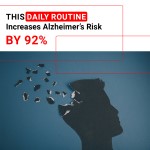Are Infectious Viruses Actually Alive?
health Tags: Actually, Alive, Infectious, VirusesNo Comments »
What is the truth about viruses? They evolve, grow, and can be killed by our immune system, but are they actually alive? Learn all about these ferocious little things in this new episode of SciShow, hosted by Michael Aranda!
SciShow is supported by Brilliant.org. Go to https://Brilliant.org/SciShow to get 20% off of an annual Premium subscription.
SciShow has a spinoff podcast! It’s called SciShow Tangents. Check it out at http://www.scishowtangents.org
———-
Support SciShow by becoming a patron on Patreon: https://www.patreon.com/scishow
———-
Huge thanks go to the following Patreon supporters for helping us keep SciShow free for everyone forever:
Silas Emrys, Drew Hart, Jeffrey Mckishen, James Knight, Christoph Schwanke, Jacob, Matt Curls, Christopher R Boucher, Eric Jensen, Adam Brainard, Nazara, Growing Violet, Ash, Laura Sanborn, Sam Lutfi, Piya Shedden, Katie Marie Magnone, Scott Satovsky Jr, charles george, Alex Hackman, Chris Peters, Kevin Bealer, Alisa Sherbow
———-
Looking for SciShow elsewhere on the internet?
Facebook: http://www.facebook.com/scishow
Twitter: http://www.twitter.com/scishow
Tumblr: http://scishow.tumblr.com
Instagram: http://instagram.com/thescishow
———-
Sources:
https://doi.org/10.1080/073911011010524992
https://doi.org/10.1016/j.shpsc.2016.02.016
https://doi.org/10.1007/s11229-011-9879-7
https://doi.org/10.1016/j.tig.2010.07.003
https://pubmed.ncbi.nlm.nih.gov/33519747/
https://doi.org/10.1093/cid/cix349
https://doi.org/10.1515/bmc-2020-0001
https://pubmed.ncbi.nlm.nih.gov/19270719/
https://doi.org/10.1016/j.shpsc.2016.02.008
https://doi.org/10.1016/j.shpsc.2016.02.010
https://doi.org/10.1016/j.shpsc.2016.02.014
https://doi.org/10.1038/340467a0
https://doi.org/10.2307/1313569
https://pubmed.ncbi.nlm.nih.gov/30300353/
https://pubmed.ncbi.nlm.nih.gov/26475454/
https://pubmed.ncbi.nlm.nih.gov/12663918/
https://pubmed.ncbi.nlm.nih.gov/16741503/
https://doi.org/10.1016/j.shpsc.2016.02.010
https://doi.org/10.1002/9780470015902.a0023269
https://doi.org/10.1128/JVI.01107-07
Image Source
https://www.istockphoto.com/photo/big-oak-in-the-sunlight-gm1186742971-334950326
https://commons.wikimedia.org/wiki/File:Paenibacillus_alvei_endospore_microscope_image.tif
https://commons.wikimedia.org/wiki/File:Wolbachia.png
https://commons.wikimedia.org/wiki/File:Electron_microscopic_image_of_a_mimivirus_-_journal.ppat.1000087.g007_crop.png
https://commons.wikimedia.org/wiki/File:Mitochondria,_mammalian_lung_-_TEM.jpg
https://commons.wikimedia.org/w/index.php?search=bacteriophage&title=Special:MediaSearch&go=Go&type=image
https://www.istockphoto.com/photo/3d-virus-cells-attacking-a-dna-strand-gm1154473170-313965927
https://www.istockphoto.com/photo/virus-cells-under-the-microscope-gm1218190140-355876337
https://www.istockphoto.com/photo/virus-dna-covid-19-coronavirus-dna-water-white-background-3d-rendering-gm1216077362-354457735
https://www.istockphoto.com/photo/diatoms-are-photosynthesising-algae-they-have-a-siliceous-skeleton-and-are-found-in-gm1182559067-332114302
https://www.istockphoto.com/photo/2020-coronavirus-pandemic-banner-gm1213840577-352931797
Video Rating: / 5
What are viruses | Cells | Biology | FuseSchool
In this video we are going to look at what viruses are.
Viruses are a type of microorganism. They are too small to be seen with the naked eye: much smaller than bacteria, and about 100 times smaller than human cells. They come in many different shapes and are present wherever there are cells to infect. In fact, viruses are the most common biological unit on Earth, outnumbering all other types combined!
Viruses can infect humans, all animals, plants and even bacteria.
Viruses are very simple. They are made up of a protein coat surrounding a strand of genetic material. The genetic material can either be DNA or RNA.
Sometimes a membrane called an envelope surrounds a virus particle. This envelope isn’t made by the virus, but is actually stolen from the membrane of the host cell. This is a great strategy by the virus – it makes it harder for the host cell to identify the virus as foreign.
As we just saw, viruses aren’t made up of cells. In fact, they aren’t really living. They are halfway between a living organism and a chemical. Because they aren’t living, we say there are different types of virus… rather than saying different species of virus. Some common types of viruses are influenza and HIV/AIDS.
So if viruses aren’t living, how do they cause illness?
Viruses are parasites: they can only reproduce in other living cells. They enter a host cell and hijack the host’s genetic machinery. They make copies of their own viral genetic material instead, and produce lots more virus particles. After lots of virus particles have been made, the host cell dies and the viral particles are released to infect more cells. The released viral particles can also spread to other people.
There are actually two different ways in which the virus attacks the host cell, which we will look at in more detail in this video. ( How viruses cause illness ).
Viruses causes many human diseases, including colds… influenza… rabies… yellow fever… HIV/AIDS… pneumonia… bird flu… zika… ebola… and the cancer causing HPV. These are just a few examples.
Fortunately, the human immune system is very good at dealing with viral invaders.
Sometimes our immune system will recognise the virus as an intruder and will destroy the virus before it gains entry into a cell. Even after infection begins, often our immune system destroys the virus and the person recovers. Sometimes the immune system cannot destroy the virus fast enough, and the virus can cause permanent damage or death. In 1918 the Spanish flu is thought to have caused up to 50 million deaths worldwide.
Scientists have developed vaccinations against lots of viruses, which have even led to the eradication of some viruses like smallpox as all human hosts became immune. However, some viruses like HIV have proved impossible to develop any kind of vaccine for.
Did you know that antibiotics do not work for viruses? They are only for bacterial infections. If you have a cold or the flu, you shouldn’t be taking antibiotics – they won’t make a difference.
There are some anti-viral drugs that have been developed, such as one that dramatically prolongs the life of people affected by HIV.
So there we have viruses. They are incredibly simple organisms, but are extremely effective at causing infection!
SUBSCRIBE to the FuseSchool YouTube channel for many more educational videos. Our teachers and animators come together to make fun & easy-to-understand videos in Chemistry, Biology, Physics, Maths & ICT.
VISIT us at www.fuseschool.org, where all of our videos are carefully organised into topics and specific orders, and to see what else we have on offer. Comment, like and share with other learners. You can both ask and answer questions, and teachers will get back to you.
These videos can be used in a flipped classroom model or as a revision aid.
Find all of our Chemistry videos here:
Find all of our Biology videos here:
Find all of our Maths videos here:
https://www.youtube.com/watch?v=hJq_cdz_L00&list=PLW0gavSzhMlTyWKCgW1616v3fIywogoZQ
Twitter: https://twitter.com/fuseSchool
Access a deeper Learning Experience in the FuseSchool platform and app: www.fuseschool.org
Follow us: http://www.youtube.com/fuseschool
Friend us: http://www.facebook.com/fuseschool
This Open Educational Resource is free of charge, under a Creative Commons License: Attribution-NonCommercial CC BY-NC ( View License Deed: http://creativecommons.org/licenses/by-nc/4.0/ ). You are allowed to download the video for nonprofit, educational use. If you would like to modify the video, please contact us: info@fuseschool.org





























































